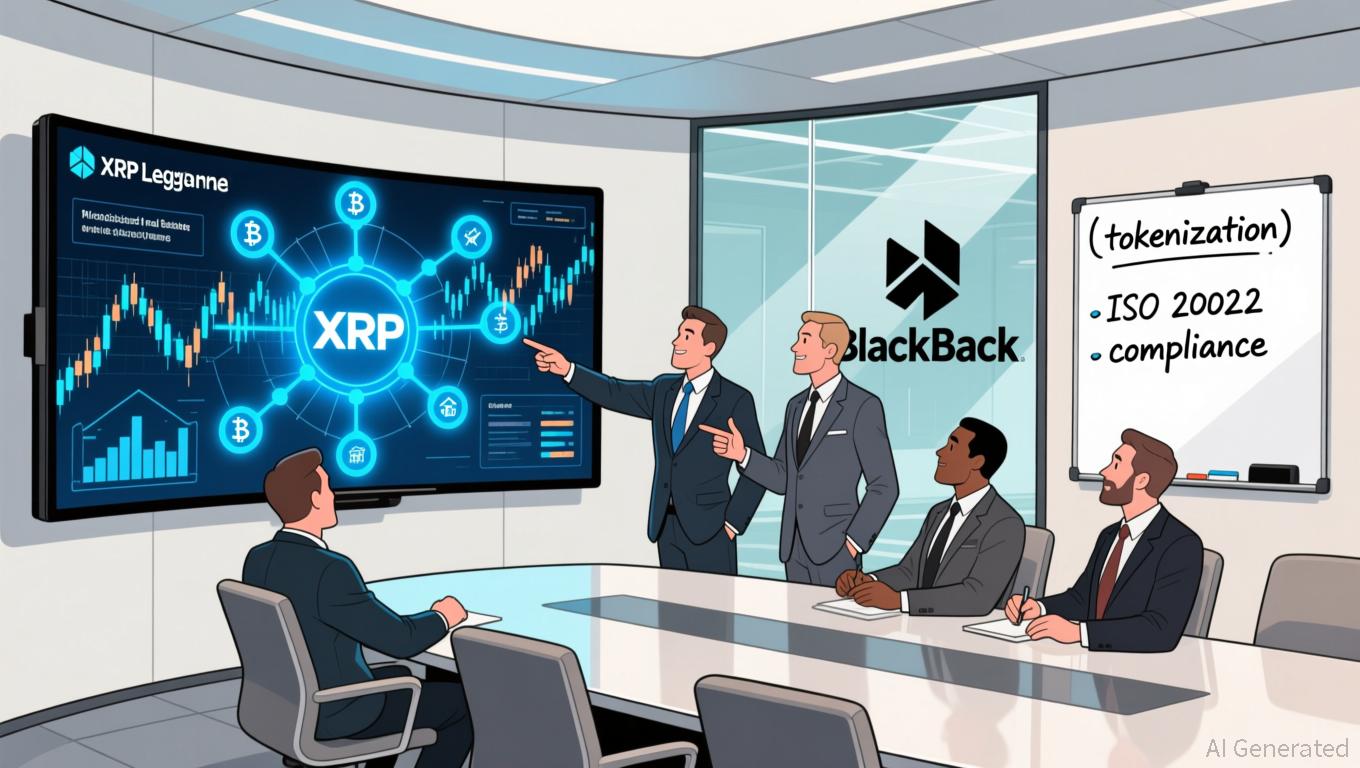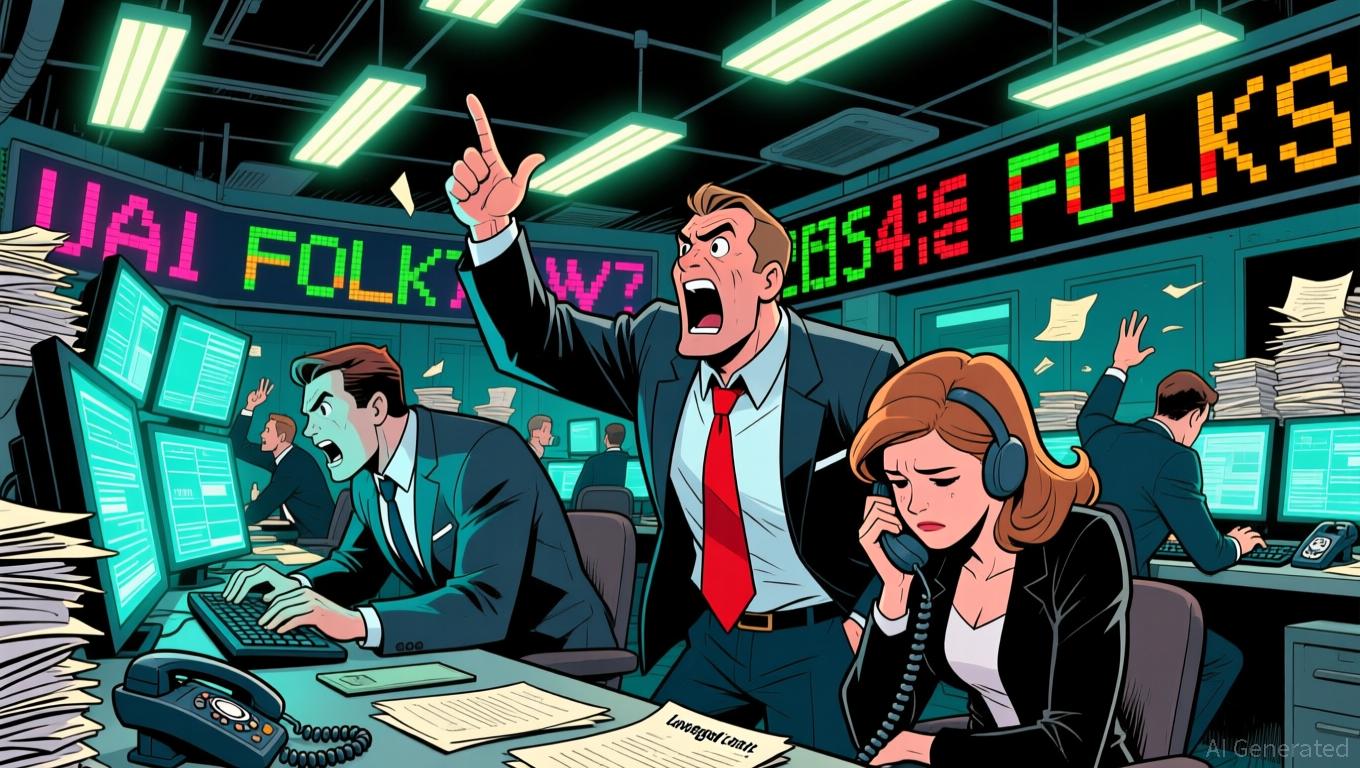Ethereum Updates: DeFi Enigma: Did the 20,000 ETH Withdrawal Fund an Aave Loan or Serve as a Risk Management Move?
- A crypto address withdrew 20,000 ETH from a CEX, sparking speculation it could repay an Aave loan or adjust DeFi collateral ratios. - Aave's v3 platform streamlines borrowing, driving increased utilization as traders rebalance risk in volatile markets. - Blockchain analysts note the receiving address's prior Aave interactions, though the transaction's exact purpose remains unconfirmed. - Experts caution DeFi users about liquidation risks and slippage when managing leveraged positions amid price fluctuati
Recently, a crypto wallet withdrew over 20,000 ETH from a centralized exchange (CEX), prompting speculation that the move might be related to settling a debt on the

According to blockchain analytics providers, the transaction consisted of a single, substantial transfer of 20,000 ETH—worth about $[insert value based on current ETH price]—from a CEX account to an external wallet. The specific intent behind this withdrawal is still uncertain, but as mentioned in
Aave enables users to lend and borrow digital assets by providing excess collateral, and has experienced higher usage rates lately as liquidity needs remain strong. The platform’s third version, introduced at the end of 2022, has made borrowing even more efficient, attracting traders interested in leveraging their positions. Should the withdrawn ETH be allocated for loan repayment, it would mirror a broader pattern of users managing risk in an unpredictable market environment.
The centralized exchange involved has not issued any statements regarding the withdrawal. Nonetheless, recent exchange reports show a modest increase in large-scale withdrawals over the past week, though nothing out of the ordinary has been detected. Blockchain security specialists have pointed out that, while the transaction appears above board, individuals should be mindful of risks such as liquidation or price slippage when handling DeFi investments.
Disclaimer: The content of this article solely reflects the author's opinion and does not represent the platform in any capacity. This article is not intended to serve as a reference for making investment decisions.
You may also like
XRP whales cap selling as wallet growth hits 8-month high
XRP News Today: BlackRock's Investment in XRP Encounters Regulatory Hurdles While Trillions Remain on Hold
- BlackRock's Maxwell Stein highlighted XRP Ledger's role in tokenizing $trillions of real-world assets, partnering with Securitize to boost blockchain infrastructure. - Ripple's $500M funding at $40B valuation and XRP's ISO 20022 compliance intensify ETF speculation amid regulatory uncertainty over SEC's stance. - BlackRock faces scrutiny after a $500M fraud scandal at HPS, raising doubts about its crypto credibility despite XRP's Mastercard/WebBank integrations. - Industry splits on XRP's potential: Blac

Bitcoin Plummets Unexpectedly: Has It Hit the Floor or Is a Larger Downturn Ahead?
- Bitcoin fell 15% in August 2025 amid Fed policy shifts, China's crypto ban, and ETF outflows, testing its macro asset status. - The Fed's delayed rate cuts and inflation ambiguity created market uncertainty, while China's ownership ban disrupted liquidity and global demand. - On-chain data shows 375,000 BTC accumulation and a 1.8 MVRV ratio, suggesting structural resilience despite regulatory shocks. - ETF outflows ($291M total) reflect investor caution over inflation risks and regulatory gaps, but could

Bitget Connects Web2 and Web3 by Offering Zero-Fee Trades and Up to 50x Leverage on AI-DeFi Trading Pairs
- Bitget launched 50x-leveraged USDT-margined perpetual contracts for UAI and FOLKS, alongside automated trading bots to boost algorithmic accessibility. - The zero-fee U.S. stock token campaign and Kite (KITE) listing aim to bridge Web2/Web3 by integrating traditional assets with blockchain infrastructure. - With 120M+ users, Bitget's UEX model combines centralized efficiency with tokenized finance, targeting AI/DeFi growth through macroeconomic and onchain exposure.
